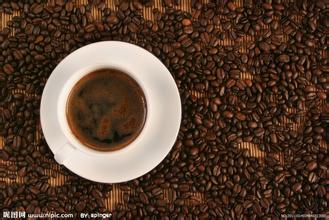Puerto Rican Coffee Variety Flavor description Taste characteristics Fine Coffee introduction
Coffee cultivation has brought them good returns. In the 1860s, they dominated the coffee industry on the island, when Puerto Rico produced the sixth largest coffee bean in the world. The coffee trees planted by Corsican immigrants on the highlands were regarded as selected, and the origin of Yauco Selecto coffee beans was mainly traced back to this period, but two severe hurricanes hit Puerto Rico in 1898. The two hurricanes destroyed the local coffee industry, and farmers had to wait two years to get their crops back to normal. During this period, the United States was very interested in Puerto Rico's sugar production. In addition, European countries no longer regard Puerto Rican coffee beans as crops produced by their colonies and impose tariffs, which have dealt a heavy blow to Puerto Rican coffee.
Puerto Rico's new farm coffee is a mild, supple and well-balanced island bean with a charming single malt flavor, extremely sweet when sipped in a cup, and medium-roasted creamy and greasy texture that is often suitable for Puerto Rico island beans. The whole history of coffee in the Caribbean has a lot to do with Spanish reclamation. Coffee was not that important in the 18th century. The main job was to grow sugar-producing crops in fertile valleys. In the early 19th century (1800), the residents of Corsica in the French Mediterranean moved to Puerto Rico because the valleys had been occupied by Spanish immigrants. So they chose to settle in the southwest mountain area of the island, mostly near the city of Yuko. because of their efforts and determination, coffee cultivation brought them a good return. They dominated the coffee industry on the island in the 1860s. At that time, Puerto Rico's coffee bean production ranked sixth in the world, and the coffee trees planted by Corsican immigrants on the highlands were regarded as selected. The origin of Yauco Selecto coffee beans is mainly traced back to this period, but two severe hurricanes hit Puerto Rico in 1898. These two hurricanes destroyed the local coffee industry, and farmers had to wait two years to get the crops back to normal. During this period, the United States was very interested in Puerto Rico's sugar production, and European countries no longer imposed tariffs on Puerto Rico coffee beans as crops produced in their colonies. Dealt a heavy blow to Puerto Rican coffee. The Caribbean Sea is a warm, romantic and mysterious sea, and a lot of good coffee is also around this ring sea, such as the Blue Mountains of Jamaica, Dominica, Crystal Mountain of Cuba, Yuko of Puerto Rico, and so on. These are the most famous rare and expensive coffee in the world. These island beans make people have a light milky aroma and elegant floral aroma, acidity and meticulous softness. Although it is still difficult to avoid the problem of easy water loss of coffee caused by the muggy climate of the island, the overall texture is the first-grade beans of coffee. Puerto Rico coffee is not easy to buy on the market mainly because the output is less and mostly exported to Europe. Coupled with the adverse effects of severe weather hurricanes on coffee crops, there will be no coffee to buy for the whole year.

Important Notice :
前街咖啡 FrontStreet Coffee has moved to new addredd:
FrontStreet Coffee Address: 315,Donghua East Road,GuangZhou
Tel:020 38364473
- Prev

Creamy Dominican Coffee Flavor Description Variety Features Fine Coffee Taste Introduction
In the early 18th century, coffee was introduced to Dominica from Martinique, and the northern regions, represented by Ciba, and the southern regions, including Ocayabani Santo Domingo, produced fine coffee. Among them, Santo Domingo and Bani produced coffee, almost synonymous with Domica coffee, is world-famous quality coffee. Santo Domingo coffee, characterized by fresh and elegant,
- Next

Flavor description of Burundian Coffee varieties with Sweet Flavor introduction of Fine Coffee
The capital Bujumbura (Bujumbura), with a population of 393000 (2012), is the political, economic and cultural centre of Burundi. Bujumbura was formerly known as Wusumbura. In the west of the border, the north bank at the eastern end of Lake Tanganyika. The average annual temperature is about 22 to 26 ℃. The city is backed by mountains and lakes, with a pleasant climate, beautiful scenery, lush trees, flowers and expanding tourism facilities.
Related
- Detailed explanation of Jadeite planting Land in Panamanian Jadeite Manor introduction to the grading system of Jadeite competitive bidding, Red bid, Green bid and Rose Summer
- Story of Coffee planting in Brenka region of Costa Rica Stonehenge Manor anaerobic heavy honey treatment of flavor mouth
- What's on the barrel of Blue Mountain Coffee beans?
- Can American coffee also pull flowers? How to use hot American style to pull out a good-looking pattern?
- Can you make a cold extract with coffee beans? What is the right proportion for cold-extracted coffee formula?
- Indonesian PWN Gold Mandrine Coffee Origin Features Flavor How to Chong? Mandolin coffee is American.
- A brief introduction to the flavor characteristics of Brazilian yellow bourbon coffee beans
- What is the effect of different water quality on the flavor of cold-extracted coffee? What kind of water is best for brewing coffee?
- Why do you think of Rose Summer whenever you mention Panamanian coffee?
- Introduction to the characteristics of authentic blue mountain coffee bean producing areas? What is the CIB Coffee Authority in Jamaica?

